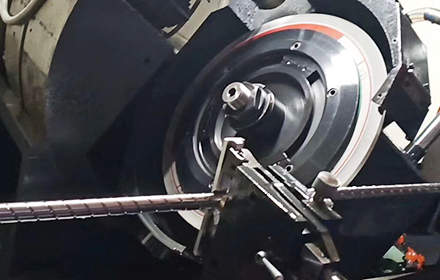When heating the surface of non-uniform cylindrical devices, different parts of the workpiece require different frequencies during induction heating china to achieve uniform heating depth. During gear induction hardening, the gear surface uses high frequency induction heating machine. The heat generated by the induction current quickly conducts to the gear crest, fully hardening it, but the root section is not adequately hardened, leading to increased residual stress at the gear root, potentially causing it to fracture. Using medium-frequency induction heating china on the gear surface, the heat conducts to the root section. As the gear root is concave, the heat exponentially decreases during its conduction to the gear crest, ultimately effectively hardening the root section, but the gear crest remains insufficiently hardened, reducing its lifespan. Here's a typical case of high-frequency heating on the gear crest.
To overcome the above two drawbacks, it is necessary to uniformly heat the gear surface during the heating hardening process. Simply using either high-frequency or medium-frequency heating alone cannot achieve this, which led us to develop the dual-frequency mixing induction heating technology. It can simultaneously output both high and medium frequencies to the load end, which is the sensor.
In this way, both high-frequency and medium-frequency currents flow through the inductor simultaneously, and the gear surface also induces both high and medium frequencies. High-frequency heats the gear crest while medium-frequency heats the root section, ensuring uniform heating of both the crest and root simultaneously. After hardening, a relatively uniform hardened layer can be obtained, with small and even residual stress, reducing the risk of cracks post-hardening.
Simultaneous output of medium and high frequencies
Medium and high Frequencies can be used independently
High-speed DSP processor for fast control
Precise power and energy control
Extremely fast processing speed
Good contouring effect of the hardened layer
Minimal deformation
Almost no oxidation
Digital and analog interfaces
No easily damaged parts, low operating costs.
Fast heating speed, low thermal inertia, high system response speed.
Direct heating of the crucible, high power density, easier to achieve high temperatures.
Uses high-precision induction heating machine china, high power control accuracy, allowing for high-precision temperature control.
No electrical connection points between the induction heater and crucible, good insulation conditions, uniform temperature field, long service life.


